Harmony of humanity and nature at Lingyun Mountain
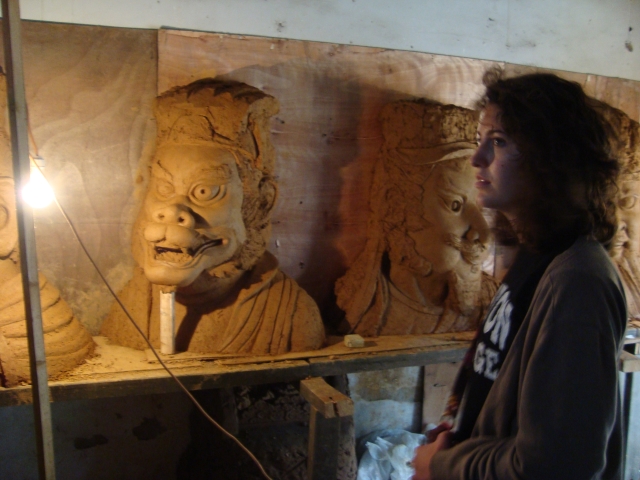
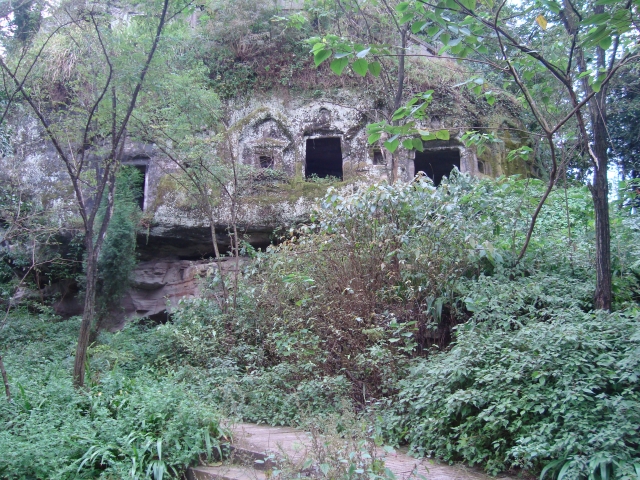
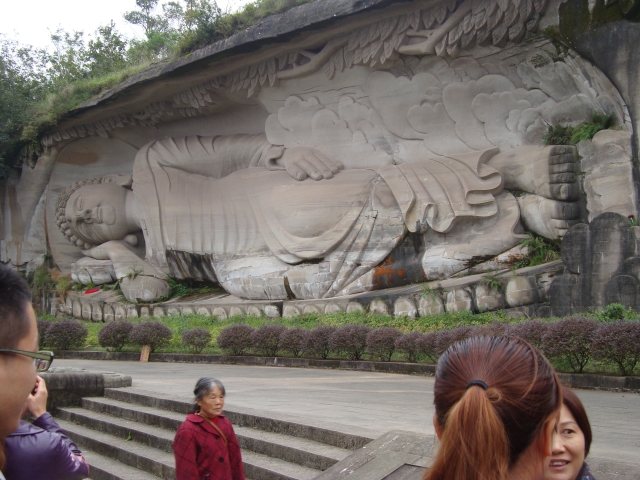
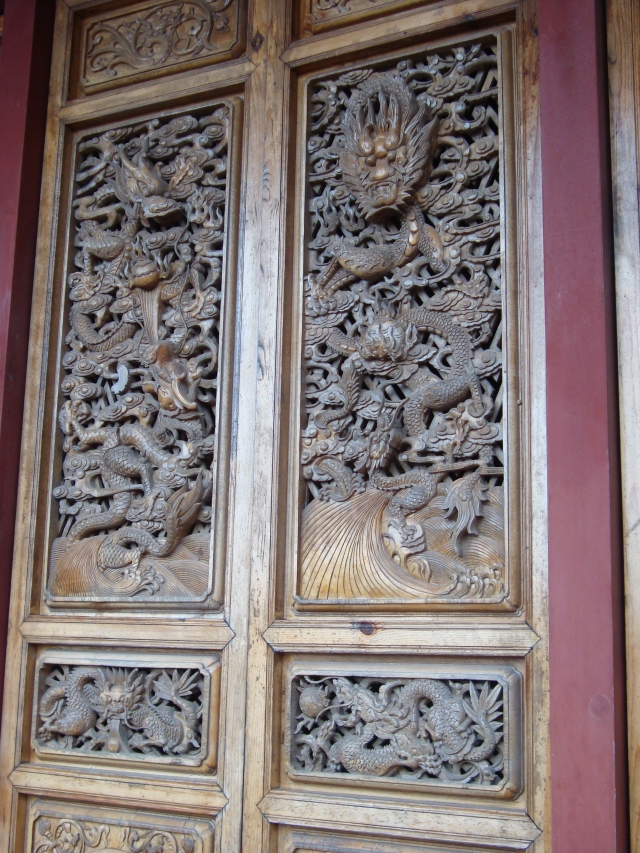
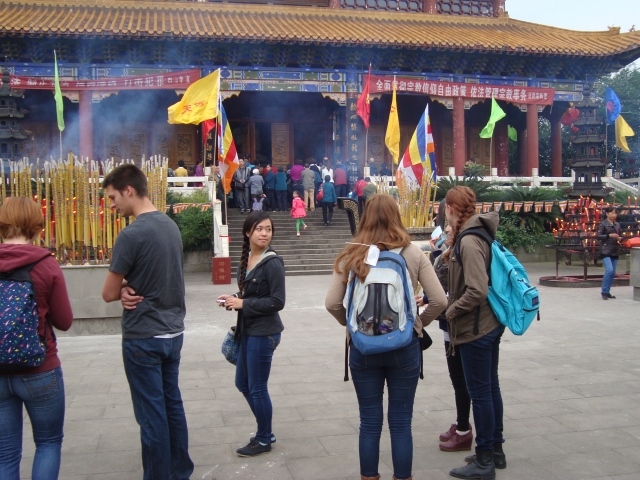
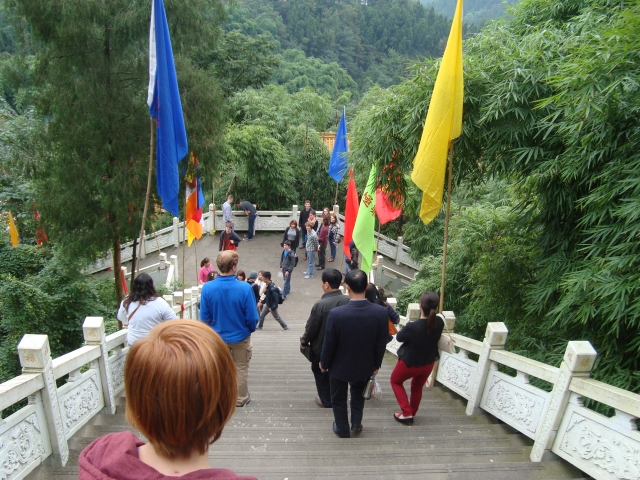
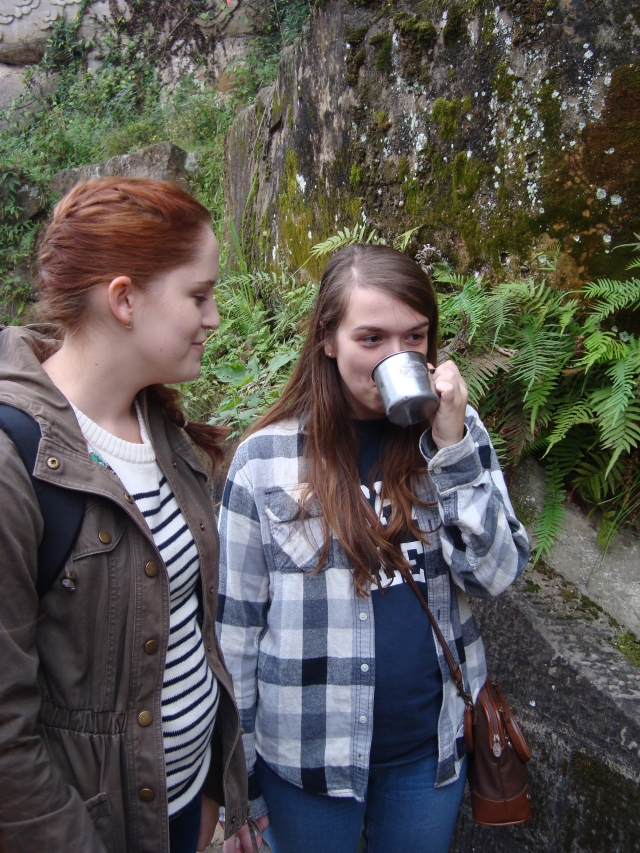
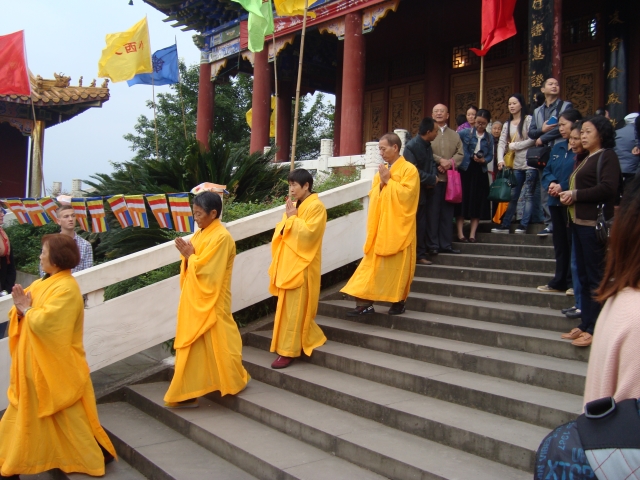

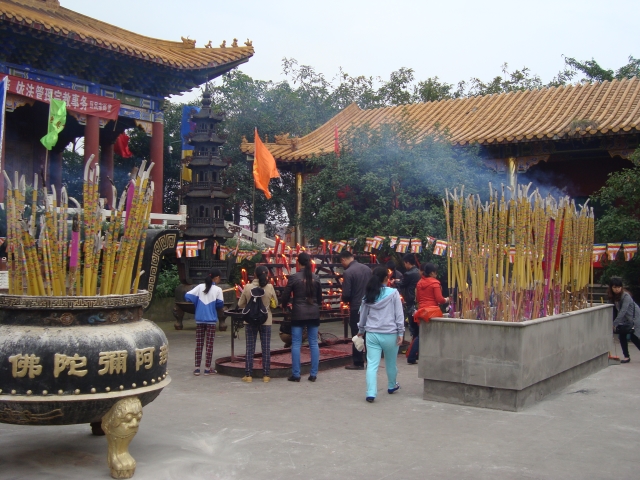
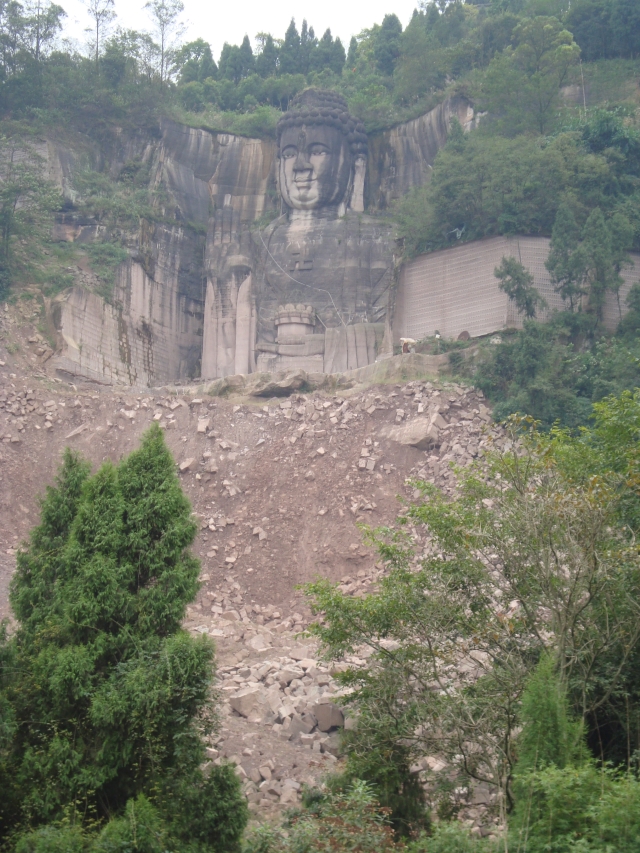
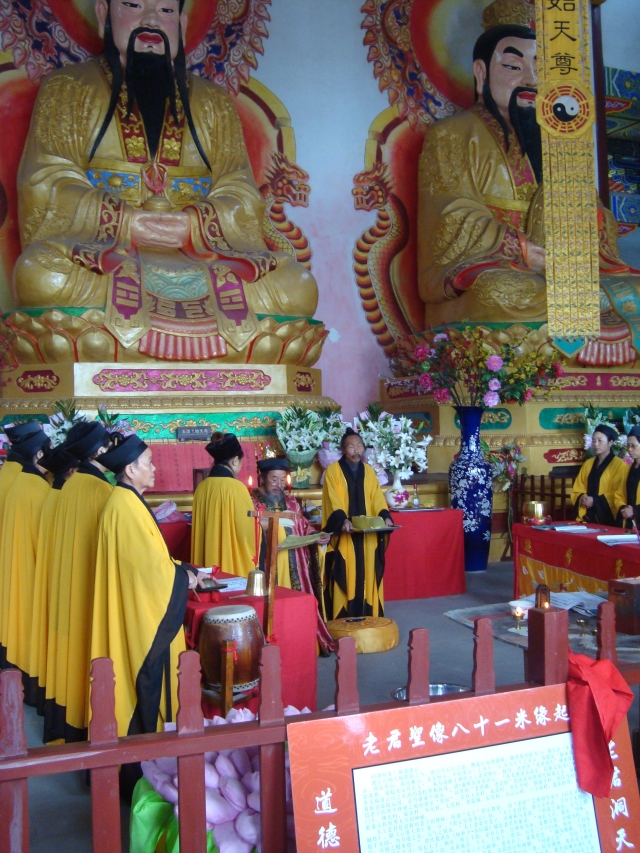
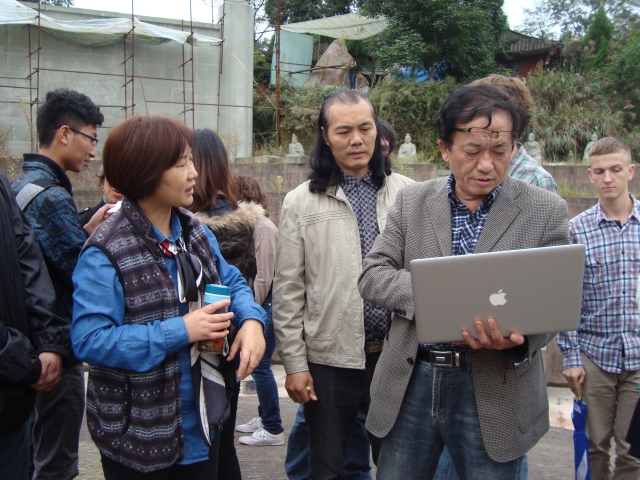
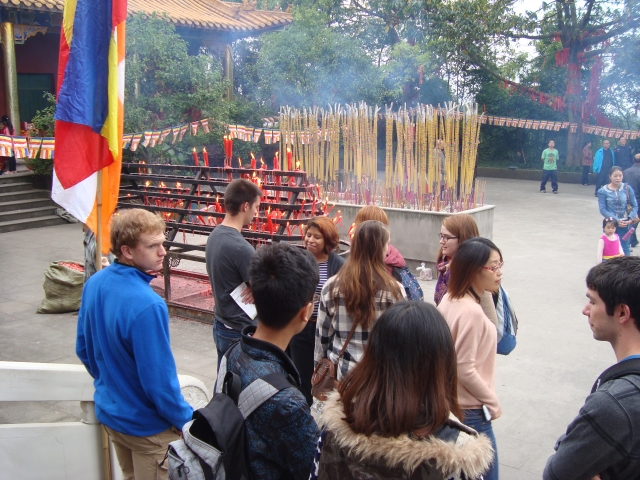
Before leaving Nanchong for their teaching service, the SST group took one more field trip, visiting Lingyun Mountain National Forest Park east of Nanchong. Professor He Mingyu of the China West Normal University’s English Department served as our guide. She had been an exchange scholar at Goshen College in 2002 and eager to meet this year’s group of GC students.
Lingyun Mountain has been a site of special significance for Chinese Daoists and Buddhists for more than a thousand years. Unfortunately, during the Cultural Revolution of 1966-1976 many of the religious sites on the mountain were destroyed. More recently, however, the Nanchong municipal government and Sichuan Province have helped reconstruct the area and created a 33 square kilometer park that encompassed Lingyun and neighboring mountains. The site has also drawn on the contributions of time and money from volunteers in the region, across the country and around the world. Professor He has been volunteering at Lingyun Mountain Park for more than ten years, as has her husband who is a botanist, so she is very familiar with the park and its history.
The park’s aim is to preserve and demonstrate the relationship of humanity and nature in three major Chinese traditions – Buddhism, Daoism, and Confucianism. About half the park is devoted to Buddhism, and a quarter to each of the other two traditions. Although we arrived about 9:30 am and stayed until 3:30 pm we saw only small portions of the park and never made it to the Confucian area at all.
One of the reasons Lingyun Mountain attracted attention so many centuries ago is that its natural rock formations and outcroppings seem to duplicate the images of the traditional Chinese constellations. In the night sky, the four dominant constellations are the dragon in the east, the tiger in the west, the eagle in the south, and the tortoise in the north. The peaks of Lingyun, which surround a natural lake, include rock outcroppings that resemble those animals, in those geographic positions. Thus, tradition says the area offers a model, in miniature, of the universe and shows us the balance and harmony of heaven and reminds humans to humbly submit to their place in the natural order and live within it.
The Buddhist section of the park includes new and reconstructed carvings of a sleeping Buddha (236 feet long), a standing Buddha (which won’t be finished for another three years), and a wide variety of other grottoes, cave tombs, and monuments to Master Wu Xiang, a Korean monk who moved to Lingyun Mountain in the late seventh century and died in 752 AD.
The Buddhist and Daoist temples in the park are active religious sites with some monks living in monasteries within the park. However, most days there are no religious rituals being performed, and since two traditions follow different ritual calendars, Professor He had never been to Lingyun when both were active on the same day. (Indeed, most times when she takes a group, neither is active.) But it turned out that October 12 is the “renunciation day” of Guanyin, a figure revered as the embodiment of mercy in both traditions. (Renunciation day refers to the day that Guanyin is said to have renounced worldly aspirations and taken on monastic vows.) So we were able to see rituals being carried out in both the Buddhist and Daoist temples – something Professor He kept saying was highly unusual. In the case of the Daoist worship, we caught the final 15 minutes of their 3 hour service. Later we visited the Daoist monastery and sat with the 65-year-old priest-master who politely answered our questions about his training and duties.
Later we met a landscape architect from Beijing who is designing a major new installation at Lingyun Mountain. He happened to be visiting for the weekend to check on the project and showed us the multi-step process in which craftsmen are reproducing a large stone relief with three hundred figures. First, artists used photos of the original to create a small-scale fiberglass replica. Next they create full-size clay models of the figures that, finally, they will carve into stone slabs.
One notable feature of Lingyun Mountain is that the families who have long farmed the land remain living and farming within the park. In China – as is also true in many parts of the Western world – when the state creates a national park long-time residents are moved off the land on which they have lived for generations to create an area free of human beings (other than the tourists who visit). As Professor He explained, since Lingyun Mountain seeks to illustrate traditional understandings of the relationship of people and the land, it seemed obvious that this park would not displace the inhabitants, but invited them to stay and continue farming, making the most of traditional practices and organic methods.




